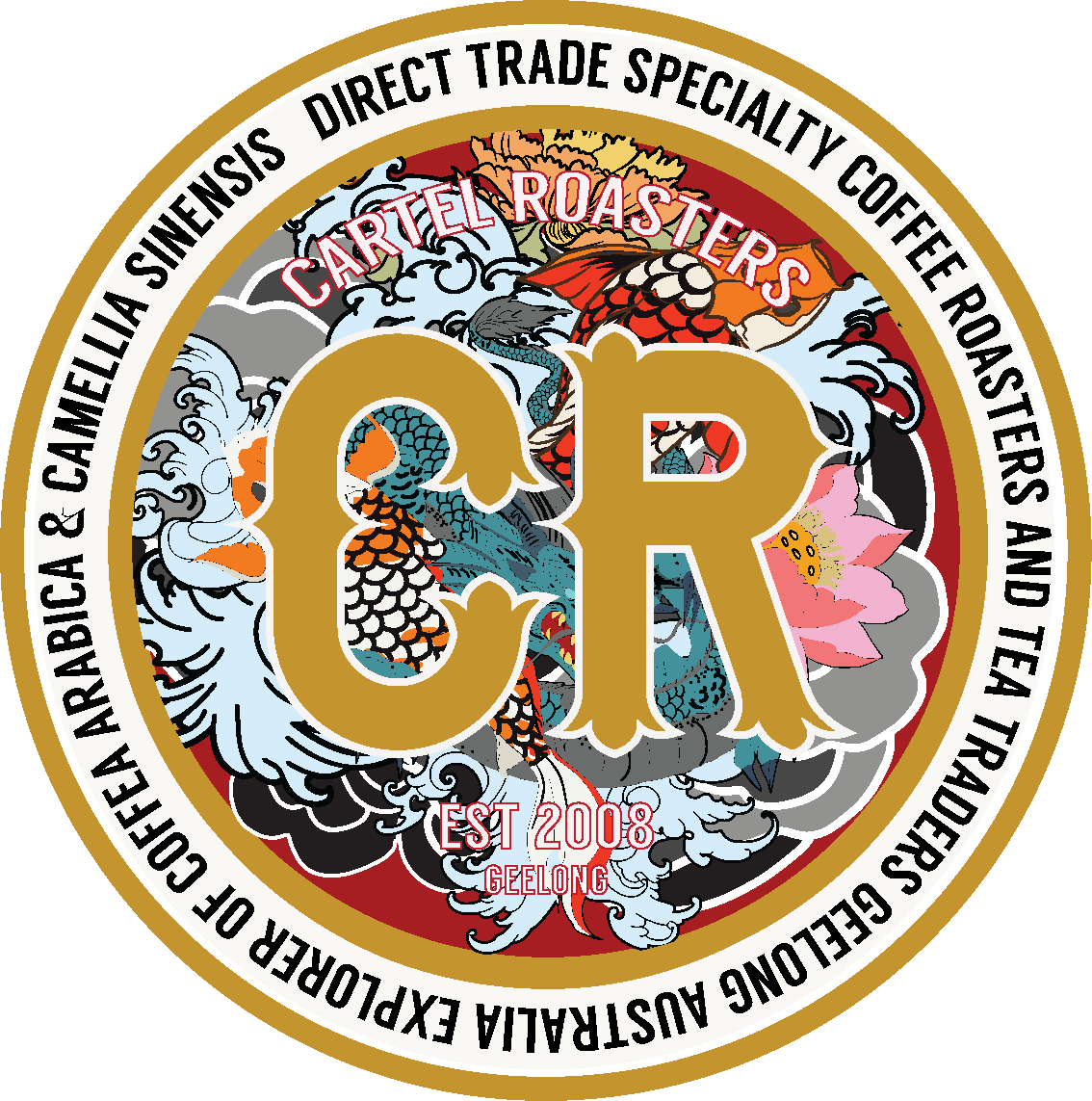Washing coffee cherries results in a clean flavour profile in the coffee and represents an ideal processing method for those who prefer a brew that is both mild and bright. This processing method cuts and washes off the cherry from the coffee bean and also removes as much mucilage as possible. It is well-known for producing coffees that boast a light body and a bright clean cup.
The first step in the washed process is to take the raw coffee cherries, weigh them, then remove the cherry using a large mechanical depulping machine. Inside the machine, a blade cuts the cherry open, extracts the pair of beans contained inside, and then discards the empty cherries for other uses. The coffee beans, now left with a layer of mucilage, are set aside for mucilage removal by other means.
The mucilage is made up of a variety of different sugars and alcohols, which will affect the final flavour of the bean in a significant way if it is left on. Often in semi-washed and dry-processed coffees, where the mucilage is left covering the parchment and bean, a much sweeter flavour is produced. When left on the mucilage can significantly alter the structure of a coffee bean’s cells and will ultimately affect the types of notes that can be tasted.
Washed processing can be continued by either using a machine or by fermenting the beans, or completely by hand.
Mechanical Demucilagers
Although they are not capable of removing all of the mucilage, mechanical demucilagers have been a blessing on modern day washed process coffee production. This new technology is capable of saving a lot of water (an extremely important selling point in many of the countries that produce coffee, such as those located in the African deserts where water is often a scarce commodity) as well as preventing a lot of waste production that was typically generated by use of other methods. These wonderful machines are used in both semi-washed and fully-washed coffee production methods and can be calibrated to remove a very particular and exact amount of mucilage from the bean itself. When producers wish to create a fully-washed coffee using this technology, often they will allow the coffee to go through an extra fermentation process at the end to remove the last bits of mucilage remaining on the coffee beans.
Another advantage mechanical demucilagers have over traditional methods of fermentation is that they can also remove the cherry on their own, using the same method of friction that is used to remove the mucilage itself.
Once the mucilage has been removed, the beans are washed to remove any last bits of mucilage that may still be clinging to them. At this stage one more layer is still covering the bean; this layer is called the parchment, and too is eventually removed after the coffee is dried (see: drying). The parchment is taken off in a method called dry milling/hulling, and finally the coffee is ready to be packaged and shipped.
Fermentation Tanks
Mucilage is broken down by bacteria that is naturally present within a fermentation tank in this method. As many as four days can be spent fermenting the coffee, however sometimes the process can take as little as six hours. The length of time the coffee spends in fermentation depends heavily on the weather conditions as well as what flavour is desired in the coffee; generally, it takes a great deal of skill to produce optimum coffees through this method. It is capable of removing all the mucilage from the coffee bean and parchment, and fermentation tanks are therefore sometimes used after mechanical demucilagers to completely finish the job.
The 72 Hour Washed Process Method of Kenya
Kenya has a particularly complicated processing method for its coffee which accounts for its relative fame for unique, high-quality coffees the world over. It involves two separate fermentation stages and a long soaking stage to produce its coffee.
One of the first steps is to determine the relative density of the coffee beans themselves, which can be done by using specialised McKinnon depulping units. Density is a good indication of good quality and low quality beans, as low quality beans will float in the depulping units while good quality beans will sink. This allows them to be sent through separate channels, with the poorer quality beans to be sent off to be processed separately while the higher quality beans are sent straight to the fermentation tanks.
It is here that the primary fermentation begins, for a time period of up to 24 hours. Beans are washed of loose mucilage at this point, and then sent back to the fermentation tanks so that they can spend the next 12-24 hours fermenting again.
Fermented beans now spend up to six hours being washed, with bacteria, yeast mucilage and other solids being removed during this process. Any beans that float, indicating that they are of lesser quality, will run off and be disposed of.
Finally the beans are soaked for up to a full 24 hours underwater. This produces a much more intricate acidity within the bean as amino acids and proteins increase within each bean.
Devices called “skin beds” are used as a pre-drying process, in order to promptly remove the vast amount of moisture that the beans have accumulated through the complex washing and soaking processes outside of fermentation. The beans are laid out in the sun quite thinly, allowing the elements – sun and wind – to quickly evaporate moisture. They are left here for another six hours until they are ready to be properly dried.
Raised drying beds are used in the final drying stage, which the coffee is laid out on for a period of anywhere between 5 and 10 days. The total drying time depends heavily on the atmospheric conditions, such as wind, clouds, and relative sunlight.
The difference that the Kenyan method applies here is that it allows all of the coffee to breathe properly as it dries. They use ‘bodegas’ to dry the coffee in cages. In many other locales, drying beans will be allowed to rest in bags, which cause sweating and will result in unusual flavours in the bean.
Other Notes
Water used in wet processing will result in what is known as coffee wastewater as a product, however this contaminant can be recycled as a fertiliser.
Washed coffees are a staple of a number of countries, such as Brazil, Ethiopia, Indonesia and Yemen. All are well-known and well-respected for their coffee production. The washed process itself is also sometimes referred to as the “wet process” or “fully washed process”.

